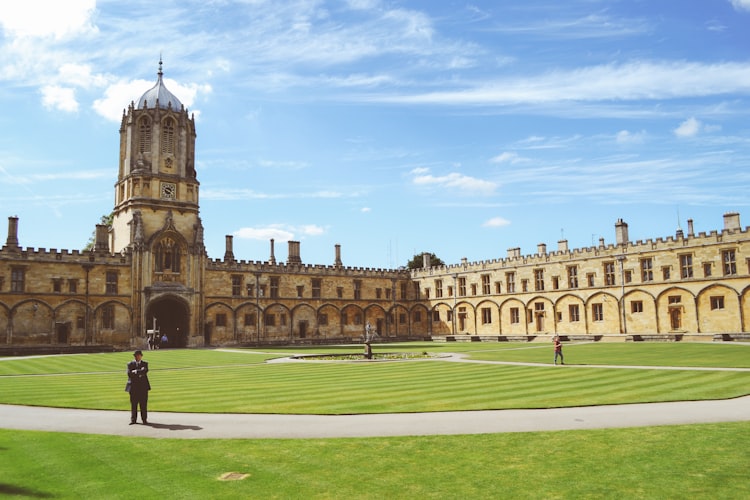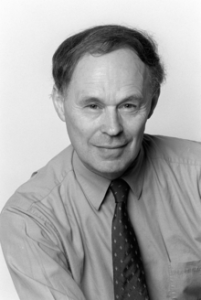
Nicholas Wade's Other Controversial Book

The subject of human genetics does not interest us, but we got curious after noticing a lot of digital ink being spent on Nicholas Wade’s recent book (see here, here and here). In fact, population geneticists do not like the book so much that they decided to write a letter to whoever to protest against it. That goes against the unwritten rule we were taught in physics, where we were not expected to popularize a document that we did not like and let obscurity take over it.
This undue publicity got us interested in other books written by Wade, and we found a gem that is highly worth reading. Wade published “THE NOBEL DUEL: The Scientists’ 21-Year Race to Win the World’s Most Coveted Prize” in 1981. The reviews are fantastic, but where can we find the book?
NY Times:
ANOTHER KIND OF SCIENTIFIC METHOD
'’The Nobel Duel’’ outlines the dark side of science - the sort of rivalry that featured so prominently in James D. Watson’s ‘‘The Double Helix,’’ but without the humor. The absence of humor undoubtedly stems from the personalities of the two protagonists, who wandered far from the traditional courtesies of their profession to gain what more talented but less driven scientists failed to acquire.
Roger Guillemin and Andrew Schally, the first a French-born physician, the other a blunt Polish refugee who started his research career as a laboratory technician, are scarcely typical scientists. One-time colleagues, they formed two teams that, in their determination to gain the same objective and gain it first, ignored almost all of the scientific niceties.
In a profession that insists on giving fair credit to every scientist who has contributed in any way to a specific finding - ‘‘If I have seen further … it is by standing upon the shoulders of Giants,’’ in Newton’s phrase - Guillemin and Schally were notably reluctant to acknowledge each other’s efforts. Guillemin consistently omitted Schally’s work from his review articles, and Schally typically shrugged aside a dispute among members of his own team with the comment: ‘‘What did it matter to me? It’s my lab - I got the glory anyway.’’ Similarly, both men refused to cooperate in the traditional manner of scientific teams embarked on the same research problem. ‘‘Don’t talk to the enemy,’’ Mr. Schally told his team. ‘‘I would have preferred a more open relationship, in which we could have got on the telephone and saved each other time,’’ conceded one former member of the Guillemin group. And in an academic world that frowns on secrecy as anathema - or at least more suitable to industrial laboratories - Guillemin and Schally often withheld information from scientific meetings for fear of alerting the opposition to a fruitful advance.
The tenor of the rivalry comes through best in an exchange of letters quoted by Mr. Wade: ‘’ ‘Your somewhat derogatory and deprecating remarks … surprised me as the attack on Pearl Harbor surprised the U.S. Navy,’ Schally complained in a letter written after a conference in which Guillemin had allegedly slighted Schally’s contributions. Guillemin’s reply to the charges was carefully calculated to vex his volatile adversary to the utmost: ‘I have no comments except to say that I am neither your conscience nor your psychiatrist,’ he wrote.’’
If their relationship was hardly typical of the world of science, neither was the quest on which the two men embarked. They sought to discover and characterize the hormones that the brain uses to control temperature, reproduction, growth and a host of other body functions. These peptide hormones, we now know, exist in minute amounts in the part of the brain called the hypothalamus. Since the biological residue left by a single fingerprint may contain more material than the hormones from a thousand hypothalami, the search for the elusive hormones became an exercise in large-scale biotechnology. At times, Guillemin and Schally spent more time in slaughterhouses than they did in their laboratories. For one experiment, which in spite of all efforts failed, Guillemin collected half a million sheep hypothalami; Schally, with smaller resources, made do with a paltry 200,000 pig hypothalami at a time.
Any major piece of research in modern biology demands specialization greater than any single scientist can possess, and both men assembled their own teams of chemists, biochemists, physiologists and other experts to make their assault on the hormones, and on the rival group. Indeed, toward the end of the race, both became glorified lab managers rather than active scientists, rounding up funds, suggesting experiments and firing ripostes at their opposite number, but rarely carrying out the grueling repetition of everyday laboratory work.
Guillemin and Schally also threw their energies into lobbying scientists who might help them to land the Nobel Prize. Once they had successfully -and almost simultaneously -succeeded in identifying the obscure hormones, they assiduously courted Rolf Luft, a leading member of the Nobel awards committee. An editorial by Guillemin in the influential New England Journal of Medicine prominently credited Luft’s research, although it had little obvious connection with Guillemin’s. Schally planned to give Luft the honor of performing the clinical trials of one of the chemicals that emerged from his team’s work.
Science writer Wade gets off to a rousing start: the Nobel prize ceremonies in Stockholm in 1977, with Rosalyn Yalow seated between her co-sharers in the physiology-or-medicine prize, Roger Guillemin and Andrew Schally–a proverbial rose between thorns. Guillemin and Schally, chafing at their proximity, glower with the mutual enmity that has been the scandal of the endocrinology world. For years each had tried–racing with the other–to isolate and synthesize the brain chemicals reputed to control the release of pituitary hormones, small proteins with horrendous names like luteinizing hormone releasing factor (LRF), thyroid releasing factor (TRF), etc. The book then flashes back to the two men’s early years–and ends with a coda on what rivalry and competition may or may not do for science. (Yalow was not involved in the rivalry, but her part in developing sensitive assay techniques paid off in identifying the chemicals involved.) Guillemin, a Frenchman, migrated to Texas via Montreal, and now presides over a prestigious lab at the Salk Institute in La Jolla. Schally, a Pole, settled in the New Orleans VA Hospital with colleagues at Tulane. For five years the rivals actually collaborated, existing in a state of muted Cold Wax. Then hostilities broke out with a vengeance. We see Guillemin behaving like a suave Napoleonic commander, missing no opportunity to excoriate Schally with innuendo and irony. Schally, a soldier’s son who also recruited troops, was more blunt, direct, and aggressive. To their credit, both men were captivated with Englishman Geoffrey Harris’ theory that the brain controlled the pituitary gland by releasing chemicals from the hypothalmus, a small cluster of nerve cells linked to the pituitary. Their belief and preliminary work flew in the face of conventional wisdom, but was vindicated over time. Wade details the progress of the rival labs, the final round-the-clock race, and the scandalous secrecy in the supposedly share-the- findings world of science. It is at times an exhilarating suspense tale, at times a poignant reading of some of the second lieutenants or spiritual leaders (like Harris). But in the end one wearies of these humorless, hard- driven megalomaniacs. What they did, ironically, was not brilliant science like Watson-Crick, but the tedious grinding up of thousands of tons of pig or sheep hypothalmi for analysis and purification. Good writing, juicy quotes, but dreary, rather dreadful protagonists.